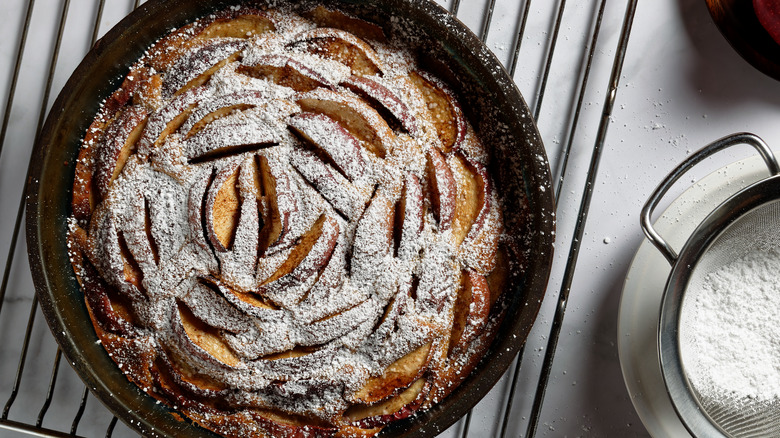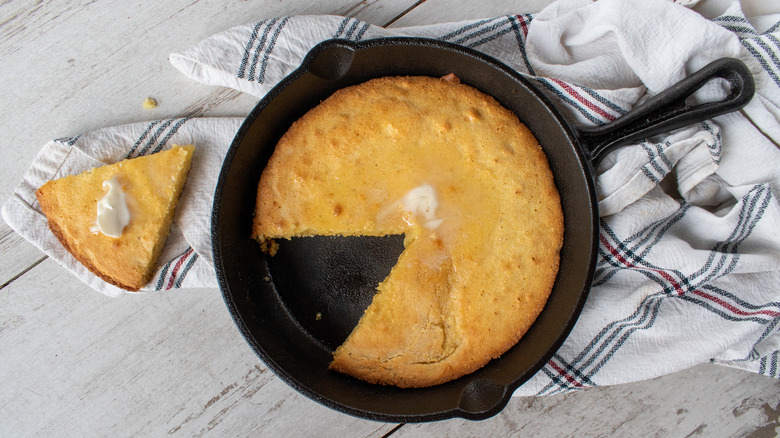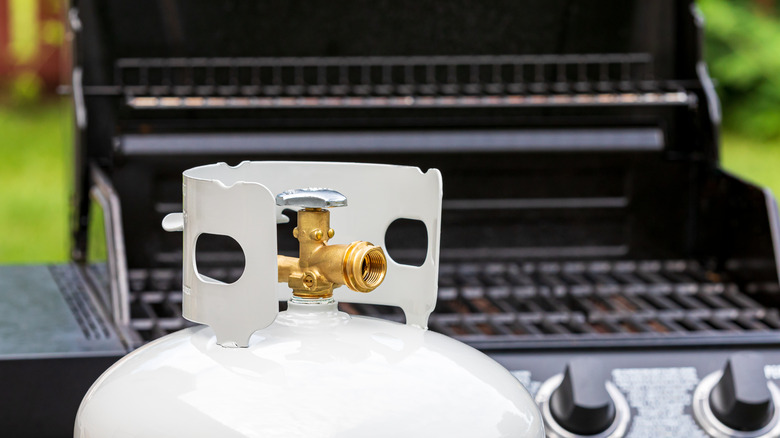Charcoal Vs Gas Grill: Which Is Better For Baking?
Grills are great for... well, grilling. It's right there in the name. Much like you wouldn't use a bamboo steamer to get the perfect sear on your steak, you wouldn't try a different cooking method on a grill, would you? It turns out, you absolutely could. It may seem strange, but a grill is essentially just a closed space in which heat circulates, which means that it can operate similarly to an oven. It most certainly is possible to bake a cake on a grill.
But there's not just one type of grill, and a charcoal versus a gas grill are going to have different effects on the baking process. So which do you want to use for baking? The answer is a charcoal grill will obviously give you a lot of great smoke flavor, but a gas grill will be far easier to work with. So if ease of use is your top priority, a gas grill is better. Each has its challenges, though, and inconsistent heat can be a problem for both — they just each require different workarounds.
Charcoal is a high-risk, high-reward option
There is no definitive answer to which is the best choice between gas and charcoal grills, because they each have different strengths and weaknesses. Charcoal in general is finicky to work with, as the temperature doesn't always maintain consistency. This is tricky for baking, as baking requires a significant amount of precision — hence the old adage about cooking being an art but baking being a science. This doesn't mean you shouldn't bake on a charcoal grill — think of the fantastic smoke flavor you could infuse your cornbread with, or biting into a smoked skillet brownie.
The answer here is to create an indirect heat zone with the coals shifted to one side of the grill, piling them up against the wall and creating an area where the baked good can absorb heat without inconsistent scorching flames. About ⅔ of your lower grill grate shouldn't have coals under it. This is extra work, and can be tricky to get your briquettes to light, so a paper towel under them soaked in oil is a helpful trick to use if your charcoal grill won't stay lit. You also have to make sure the temperature gets up in the 500 degree Fahrenheit range first. When done right, though, this will give your baked good a rich, smoky flavor that really makes them unique.
Gas grills have their own benefits and challenges
While you do want to employ an indirect heat principle when baking on a gas grill, it's a lot simpler to pull it off than with charcoal. A gas grill may not have the same inherent smoke flavor you get from charcoal, but it's also much easier to work with; lighting, staying lit, and delivering consistent heat. Essentially, the move here is to light all the burners to high until it hits 500 degrees Fahrenheit, then turn off all burners except the primary one, giving you that indirect heating zone you need.
It's worth noting that you can imbue smoke flavor on a gas grill by using wood chips. Some gas grills will come with a smoker box for this purpose, but you can also place wood chips in a foil pouch with holes in it, then put them on top of the active burner (meaning away from the baked good).
There is one other challenge when baking on a gas grill, though — they tend to lose more heat out of the grill dome, meaning the bottom of the baked good is going to get more heat than the top. The answer is to insulate the dome using some sort of buffer to keep the heat from escaping. A thermal blanket over the top of a grill is a great answer here.


